The history of programming languages: what helped the Java language "enter every home"
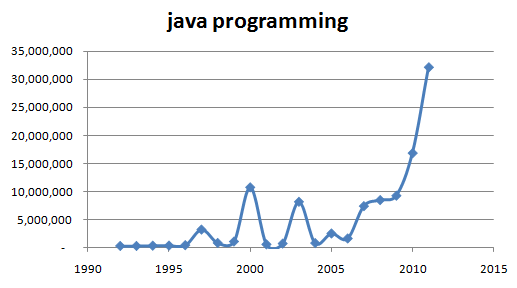
Image site vanillajava.blogspot.com
Has anyone thought that the Java language, originally intended for consumer electronics devices, will be used in many other areas?
The expansion of the influence of Java, oddly enough, began with the development of browsers.
')
Java lead developer James Gosling moved to Sun in 1984 from the IBM research department. Prior to Java, Gosling developed the NeWS and GOSMACS window interface that had no commercial success — the first implementation of the EMACS text editor in the C language.
After that, Gosling and his colleagues began to explore the prospects for the electronics and home appliances market.
“The group was tasked with creating a distributed system that could be sold to consumer electronics manufacturers as a modern software technology,” recalls Gosling.

In December 1990, Sun set up a working group to develop a new technology, which included Patrick Naughton. However, it seemed to him that the C ++ and C API capabilities were not enough for this task.
Therefore, Patrick Naughton began a project called the Stealth Project to find a solution to the problem.
Later he was joined by James Gosling and Mike Sheridan, and the project was named the Green Project. When it became clear that the project had great prospects, they invited 10 more people and started working in the office at Sand Hill Road (California). Sun supported the initiative by suggesting that it would mark the “new wave” in the IT industry.
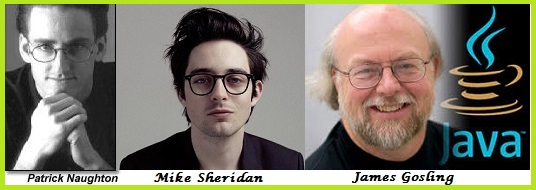
The team soon thought about improving the C ++ language. However, it turned out to be redundant and too resource-intensive to create a language on its base that meets the requirements set
1. Support for object-oriented paradigm;
2. The ability to run the same program on different operating systems;
3. Built-in mechanisms for working with computer networks;
4. Securing the remote execution of programs;
5. Take advantage of other object-oriented programming languages.
Chronology
June 1991 - Gosling begins work on the Oak interpreter, which after a few years (when searching for a trademark), was renamed to Java.
August 19, 1991 - The Green Development Team demonstrates the ideas of the basic user interface and graphics system to co-founders of Sun Scott McNealy and Bill Joy.
October 17, 1991 - Sheridan and Noton assign the designation philosophy of their team to the motto “1st Person”, which eventually becomes the name of the company.
November 17, 1991 - The Green project office again connects to the company's main network at 56 Kbps.
March 1, 1992 - Jonathan Payne joins the Green project, who later participates in the writing of HotJava.
Summer 1992 - Intensive activities to refine Oak, Green OS, user interface, Star7 hardware and related components.
September 4, 1992 - Star7 device development completed; it is demonstrated by joey and mcnilee.
October 1, 1992 - Wayne Rosing enters from SunLabs, taking over the leadership of the team.
November 1, 1992 - FirstPerson Corporation is organized.
January 15, 1993 - The team moves to Palo Alto to the building where the Western Research Lab of the DEC company was located and the original Hamilton Group (also known as OSF) was founded.
March 15, 1993 - After reviewing the results of cable interactive television tests conducted by Time Warner, FirstPerson Corporation focuses on this topic.
April 1993 - Release of the first graphical browser for the Internet - Mosaic 1.0, developed at the NCSA center.
June 14, 1993 - Time Warner continues to test its interactive cable TV with SGI, despite Sun’s recognized superior technology and assurances that Sun has won the deal.
Summer 1993 - Nothon flies 300 thousand miles, selling Oak to everyone involved in consumer electronics and interactive television; Meanwhile, the pace at which people access the Internet is growing dizzyingly.
August 1993 - After several months of promising negotiations with 3DO regarding the development of an operating system for set-top boxes, 3DO President Trip Hawkins suggests buying technology. McNeely refuses, and the deal falls through.
September 1993 - Arthur Van Hoff joins the team, initially - to create an application development environment for interactive television, and then develop, mainly, the language itself.
December 7, 1993 - HighPerson's high-level operations expertise reveals that this group has no real partners or a marketing strategy and is unclear about the release date.
February 8, 1994 - FirstPerson released a public announcement of the release, which was to be held at the Technology, Entertainment and Design (TED) conference.
February 17, 1994 - An alternate business plan from FirstPerson Corporation for the development of a multimedia platform for CD-ROM and online work was presented to Sun executives for a diversified review.
April 25, 1994 - Sun Interactive was created; half of the FirstPerson employees go into it.
June 1994 - The Liveoak project started, aimed by Bill Joy at using Oak in a large-scale small operating system project.
July 1994 - Naughton limits the scope of the Liveoak project by simply redirecting Oak to the Internet.
September 16, 1994 - Payne and Noton begin to write WebRunner - a browser-analogue of Mosaic, later renamed HotJava.
September 29, 1994 - The HotJava prototype was first demonstrated to Sun executives.
October 11, 1994 - Naughton goes to Starwave.
Fall 1994 - Van Hoff implements the Java compiler in the Java language. Previously, Gosling implemented it in C.
May 23, 1995 - Sun officially presents Java and HotJava at SunWorld '95.
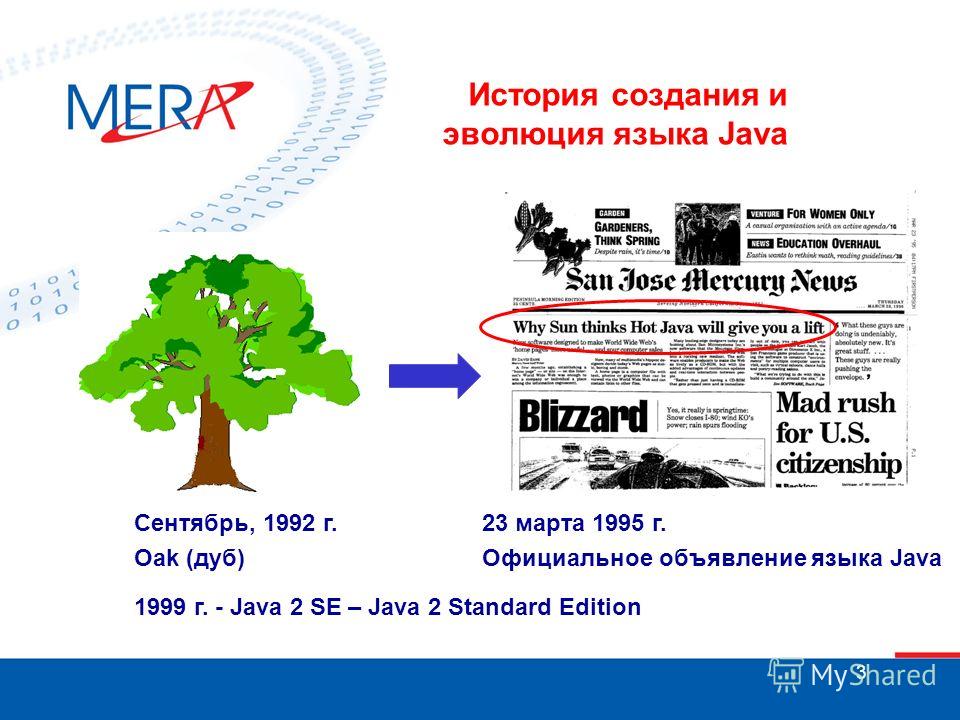
May 23, 1995 - Netscape announces its intention to use Java when developing the Netscape browser.
September 21, 1995 - Java Development Conference Held in New York
September 25, 1995 - Sun announces enhanced collaboration with Toshiba.
September 26, 1995 - Sun Announces Java Development Toolkit
October 30, 1995 - At Internet World Conference in Boston, Lotus Development Corp., Intuit Inc., Borland International Inc., Macromedia Inc. and Spyglass Inc. announce intention to license java.
December 4, 1995 - Sun, Netscape and Silicon Graphics create an alliance to develop tools for the Internet.
December 4, 1995 - Borland, Mitsubishi Electronics, Sybase and Symatec announce plans to license Java.
December 6, 1995 - IBM and Adobe announce plans to license Java.
December 7, 1995 - Microsoft announces plans to license Java.
January 23, 1996 - JDK 1.0 release

In 1997, most versions of Java remained free, with the exception of the Java Enterprise System. In the same year, a substantially updated version was released - Java 2, and separate platforms stood out: J2SE, J2EE, J2ME.
• J2SE 1.3 (May 8, 2000)
• J2SE 1.4 (February 6, 2002)
• J2SE 5.0 (September 30, 2004)
• Java SE 6 (December 11, 2006)
• Java SE 7 (July 28, 2011)
• Java SE 8 (March 18, 2014)
Each platform includes:
• programming language;
• a set of utility programs (JVM, JRE, JDK, etc.);
• a set of libraries;
The Java 2 Platform, Standard Edition (J2SE) is intended for use on workstations and personal computers. It is the foundation of all other Java technologies.
The Java 2 Platform, Micro Edition (J2ME) is a truncated version of J2SE, in order to fit the limited hardware capabilities of mobile devices, such as cell phones.
Java Virtual Machine (JVM) is a program that simulates the work of some hypothetical Java-machine.
The Java Runtime Environment (JRE) is the minimum set of tools required to run Java programs. The JRE is based on the Java Virtual Machine and a set of standard libraries.
The Java Development Kit (JDK) is a set of tools used in the development of Java programs: a compiler, a debugger, tools for automatic generation of documentation, a set of examples, etc. JDK works with ready-made text programs and does not contain any editor.
Integrated development environments (Eclipse, Netbeans, JBuilder, etc.) use external JDK to compile programs.
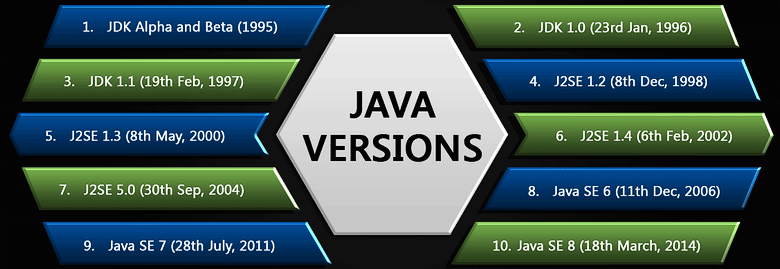
Applications of Java technology
Currently, Java-technologies are widely used in various fields. This is primarily due to the peculiarities of creating and running Java applications.
1. Application Development
The Java language is used to develop common applications that are run by the user and have access to all computer resources on a par with any other programs.
To run Java applications, the Java Runtime Environment (JRE) must be installed in the operating system.
2. Development midlet (midlet)
The Java language is used to develop specialized programs for use on mobile devices.
The structure and capabilities of midlets are due to the technical features of mobile devices.
To launch midlets, the mobile device must support the appropriate capability.
3. Development of applets (applet)
The Java language is used to develop specialized programs, usually of a small size, launched by the browser within a web document to display dynamic content and / or interactive user interaction.
To run applets, the browser must contain the appropriate plug-in.
4. Developing JSP Pages (Java Server Pages)
JSP-pages are HTML-documents with inserts in Java, which are used to analyze user requests and dynamically generate web documents based on the results of processing these requests.
To handle JSP pages, the Web server must contain the appropriate module.
5. Servlet Development
Java develops specialized servlet programs that operate within the Web server and have access to its resources: files, databases, etc.
To start servlets, use a Web server with a special module (servlet container) or a special application server.
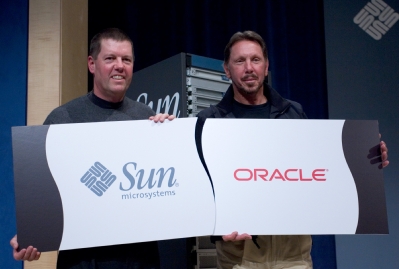
Sun Absorption
In November 2006, Sun announced part of the Java Virtual Machine (JVM) code free distribution and began releasing it under the GNU General Public License (GPL). By May 2007, the company distributed free of charge almost all of the JVM code, with the exception of a small part of it, to which Sun has no rights.
In 2009-10, Oracle Corporation swallowed Sun Microsystems. In April 2010, James Gosling, who joined Oracle after the takeover, left the company.
Source: https://habr.com/ru/post/306476/
All Articles